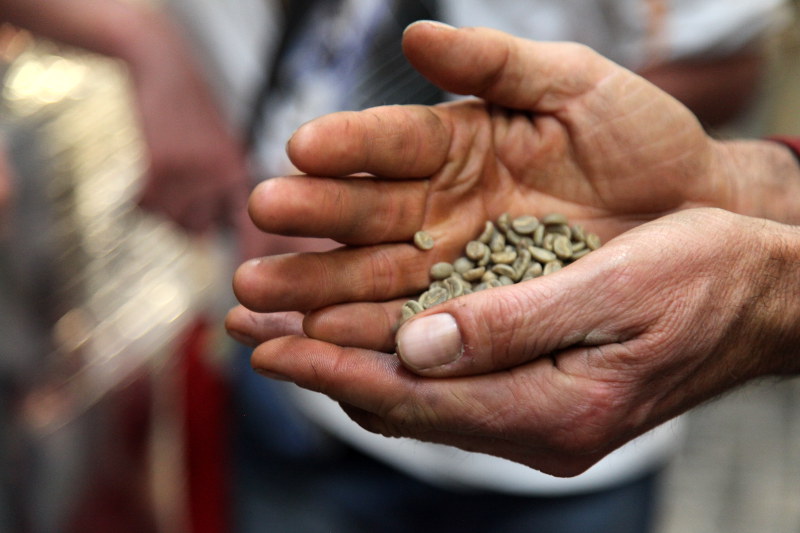Colombia is known to have some of the best coffee in the world and for farmers and sellers this is good news; coffee is an extremely stable plant and will always sell. Coffee farms dot the countryside and are so prevalent that you can get from one to the next using a cable car… like you were heading up a ski hill. This is also great news for tourists because it makes travelling between farms easy as coffee tourism grows in popularity. It’s also great news for the environment because coffee growers know they need to preserve the natural environment to grow the best coffee. Check out this video to see what I am talking about.
There are numerous micro-climates in Colombia, which means unique coffee varieties that can’t be duplicated in other regions or countries. In places like Antioquia, 95,000 families are involved in high quality, specialty coffee trade. This is critical to the Colombian economy.
How is coffee produced, you ask?
- The red berries are handpicked. This is the only way to make sure you are getting ripe coffee.
- The pulp is then separated from the bean using a machine.
- The green beans are then placed in fermentation tubs and soaked for hours to remove sugar.
- The beans are then washed and sorted by water (high-quality beans sink while defective beans float).
- The green beans are sun-dried and bagged to send off to roasters.
- Once at the roasters the bean is separated from the husk.
- Next it is put in a vat and continually stirred as it roasts.
- Stopping the roasting process is really important; beans will continue to cook even after leaving heat so really good roasters know when to stop to get the colour they want.
- The darker the bean, the longer the roaster, and the lower the caffeine.
While on a bike tour of the city we visited one such roaster / cafe: Cafe Fonda. The front of the building held a cafe that sold good food and drinks while in the back workers roasted beans and bagged them for export.
I’ve argued many times with people from coffee-producing countries about the difference between the coffee that stays in the country and the coffee that gets exported. In most cases, the best coffee gets exported and what is left behind is the broken and tasteless beans… one producer said, if the coffee bean floats during the sorting, then it’s domestic. Personally, I found it nearly impossible to find a good cup of coffee while in the country.
Some regions are trying to change this as coffee tourism becomes more popular. Also, many of the people who work in the coffee industry are those who love coffee; so, it seems rather a shame to not let them sample the product that they put their heart and soul into.
